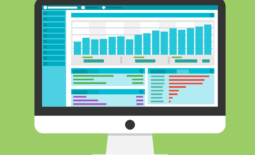Website Redesigns: What to Do if You’re Not Happy With Your Website

If you’re unhappy with your current website, chances are you’re considering a website redesign. You may have really liked your website when it was launched, but now it feels dated. Maybe you never really got the design you were looking for. Or maybe you’re having a hard time maintaining your website because the technology it runs on is confusing or not very usable.
Before you launch a website redesign process, however, there are several things you should consider.
When to Consider a Website Redesign
In general, you should seriously consider a website redesign if any of the following is true:
- Google penalized you for a design flaw that’s not an easy fix, like mobile responsiveness
- Your website is more than a couple years old
- Your website content management system (CMS) is slow, clunky, or hard to use
- You’re going through a rebranding process that will affect the way your physical storefront or office looks, including your logo or other visual elements
- You’ve noticed your competition is adopting a kind of website you think would be more effective than your current one
Ultimately, it’s your call when to go for a full-blown redesign and when to try to tweak your old design. Your first step should be to take stock of where you’re at with your current website and where you’d like to end up.
Step 1: Conduct an Audit
The first thing you should do before deciding on a website redesign is audit your existing website. Before you can know if you really need to start over from scratch, you need to diagnose all the issues with your website. A website audit or content audit is a full accounting of all the information on your current website.
To conduct an audit, create a spreadsheet with a column for links and a column for notes and go through every page of your website, writing down information like the following:
- Visual design: how effective are the visual elements of the page (i.e. graphics, color, layout, etc.)?
- Content: how effective is the written content on the page?
- Features: what features are currently available on the page? What features would you like to see in a redesigned version?
If you need more information on how to conduct an audit, check out this article:
The Magic a Content Audit Holds for Improving Your Business
Step 2: Go to Your Existing Designer With Specific Changes or Find a New Designer
Once you have your audit completed, it’s time to decide on whether or not you want to start the website redesign process or not. If you decide to pull the trigger on a redesign, you’ll also have to decide if you want to go with the person who originally designed your website or if you want to look for a new designer.
Consider the following when making this decision:
- Did your original designer do a good job?
- Did their design just get dated over time, or was it just an inferior design?
- How is your relationship with your current designer? Are you overall happy with their services?
No matter which direction you go, you should approach your designer with a list of all the specific changes you’d like to see in the new version of your website. You don’t want to end up with a new website that makes the same mistakes as your old one.
Step 3: Ask for Mockups at Each Stage
When you start your redesign process, be sure to ask your designer for mockups at each stage of the process. You especially want to see mockups or prototypes at each of the following stages:
- Initial mockup: You want to see a mockup of at least your homepage before the redesign process begins so you can see the direction the designer is thinking of going.
- Working prototype: As your designer builds your site, you should be able to see it take shape through a working prototype. You don’t want to see your site as an actual website for the first time the day it goes live. You want to be able to click through a prototype to see how the site responds to users before the site is completed.
- Finalized prototype: You also want to see a completed prototype of your website that will match, pixel-for-pixel, the live version of your website before it goes live. That way you have final approval on any last-minute changes that are required by the technology your website will run on.
Website Redesigns Are Stressful
Website redesigns are a lot of work, both on the part of the designer and on the part of the client. The best thing you can do to make yours go smoothly is to make a plan with your designer for how the process will proceed. If your designer doesn’t already have a process in place that is similar to what we’ve described above, you should be very concerned. Everything we’ve described in this article is a best practice for modern web design because this process works. Make sure you’re working with a designer who is aware of the best practices if you want to end up with a website you can be proud of.


